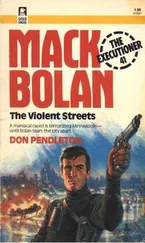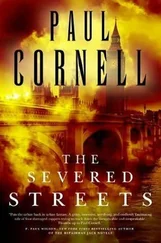“You’re welcome.”
“And the lighter.”
“You’re welcome.”
“I’m still not helping you with this one.”
“I know, Donald.”
“And your driving still sucks.”
“Yes, Donald.”
“And you’re still a piece of shit.”
“Thank you, Donald.”
“Dr. Goodin,” says Worden, pointing to the metal gurney just outside the autopsy room door, “is this one yours?”
“That one there?” says Julia Goodin. “That’s your case?”
“Well, actually Detective Brown here is the primary investigator. I’m here for moral support.”
The doctor smiles. She is a small woman, tiny in fact, with close-cropped blonde hair and wire-rim glasses. And despite the additional authority of a white lab coat, she is a young woman with at least a passing resemblance to Sandy Duncan. To be blunt, Julie Goodin looks nothing like a cutter, and considering the prevailing stereotype, that’s probably something of a compliment.
“And also,” adds Worden, “because Brown promised to buy me breakfast across the street.”
Dave Brown shoots Worden a look. Cigars. Lighters. Breakfast. You miserable old bastard, he thinks, why don’t you just bring me your fucking mortgage payments?
Worden gives back a grin, then turns his attention to the pathologist, who now has her back to the two men. She is at the metal sink, cutting through the organ tree of this hour’s client, a middle-age black man whose empty center yawns at them from the gurney just behind the doctor.
“I guess,” says Worden, “that you’re real glad to be working with me again, right?”
Julia Goodin smiles. “It’s always interesting working on your cases, Detective Worden.”
“Interesting, huh?”
“Always,” she says, smiling again. “But I won’t get to her for another half hour or so.”
Worden nods and walks back out into the weighing room with Dave Brown.
“I’ll bet she’s real happy to see me.”
“Why’s that?”
“Tiffany Woodhous. The baby case.”
“Oh yeah.”
Doc Goodin has only been down at Penn Street for a few months, but already there is a history between her and Worden. It was a clusterfuck, of sorts, and it came three weeks back on a suspected child abuse call from Bon Secours, where the broken body of a dead two-year-old greeted Worden and Rick James in the rear examination room. Tiffany Woodhous had arrived at the hospital as a cardiac arrest case, but when the ER technicians forced a tube down into the child’s stomach, the only liquid they brought up was old blood from an earlier injury. Doctors then noticed that rigor mortis was already developing in the face and extremities. Both detectives noted a large bruise on the right side of the forehead, as well as others on the shoulder, back and abdomen.
Assuming the worst, the detectives had both parents taken down to homicide, and when they learned that there were three other children at the family’s Hollins Street home, they contacted the Department of Social Services. But after lengthy interviews, both mother and father remained insistent that they had no idea who could have caused those injuries. Then their thirteen-year-old daughter raised a new suspicion by mentioning an incident that had occurred when her ten-year-old cousin was caring for the baby. The daughter said that she was on the second floor of the house when she heard a smacking noise, and when she walked downstairs and asked about it, the younger boy explained that he had only clapped his hands. After that, she told Worden, she took Tiffany upstairs, but the little girl was quiet and listless. She put the infant back on the sofa and watched as she fell asleep.
Worden and James were both understandably eager to interview the boy, but he was suddenly nowhere to be found. He had been living with his aunt because he had already run away from his grandmother’s house on Bennett Place, and now he had fled from Hollins Street as well. Consequently, when Julia Goodin got her first look at the tiny body at the next morning’s autopsy, all she had to go on was the daughter’s statement and the obvious trauma to the body, which included a severe blow to the head that had caused massive hemorrhaging. That added up to at least a preliminary ruling of homicide-a ruling that was promptly released to reporters.
Later that same morning, however, the ten-year-old was finally picked up by district officers in the alley behind his grandmother’s house and taken to the homicide unit. In the presence of his mother and a juvenile division prosecutor, he gave a full statement. He told detectives that he had been alone with Tiffany shortly before 1:00 P.M. when she began to cry. He picked her up, played with her until she quieted down, then sat her on the arm of the reclining chair in the living room. But while the boy was watching television, the child fell backward off the chair, striking her head against a bicycle that was lying on the floor behind the chair. The little girl cried uncontrollably and the boy ran outside, looking for his cousin. He couldn’t find her and began to panic. Just then, the thirteen-year-old returned and the two of them noticed that Tiffany’s eyes were rolling back into her head. They put the child on a foam mat in the middle room of the rowhouse and listened to a gurgling noise coming from her throat. Then they noticed that Tiffany was not breathing.
They tried to resuscitate the child, a frantic and clumsy effort that explained the bruising to the chest, back and abdomen. The little girl began to breathe again and was put back on the sofa. Again she stopped breathing, and again the babysitters tried to revive her, this time by splashing her with cold water. Then they took the child to the middle room and laid her down beside her one-month-old brother. They did not call for an ambulance.
When the thirteen-year-old girl was interviewed again that same day, she recanted. She had lied in fear of her parents, and both teenagers had been reluctant to seek medical help for the same reason. Only when the parents returned home at eight that evening was an ambulance finally summoned. The children’s behavior was witless and the result was tragic, but to Worden’s mind, this was not by any stretch of the imagination a case of murder.
But the medical examiner’s office, and Julia Goodin in particular, was not entirely convinced. As the chief pathologist, John Smialek noted that the head injuries were severe, more so, in fact, than a child would be likely to sustain in a fall from a chair. But Worden believed his young witness, who had described the little girl’s fall as a backward flip from the armrest, straight down to the metal handlebars of the bicycle. And when the detectives convinced Tim Doory in the states attorney’s office not to charge the crime, Smialek insisted on a meeting. The ME’s office would not change the ruling, he told the prosecutor, and he was concerned that the case might seem to an outsider to be a cover-up by detectives who were reluctant to charge a ten-year-old defendant in a case that could never be won in court.
It was a standoff of sorts, and the problem for Goodin was simple: A forensic pathologist can’t be wrong. Not once, not ever. Not even with a preliminary finding. Because it’s a bedrock rule that any mistake by a professional expert in any criminal field-pathology, trace evidence, ballistics, DNA coding-once publicly acknowledged, becomes the domain of every defense attorney in town. Give a good lawyer a single case in which an expert’s opinion is open to criticism, and he can ride that train straight down the track to reasonable doubt. And, more than most cases, the death of a two-year-old girl can always be expected to produce headlines.
“Death of girl ruled homicide; no charges due,” declared the Sun. The paper quoted D’Addario as saying, “We have the basis for a case, but we can’t say factually what actually took place in the house… We have to stick with the medical examiner’s ruling.”
Читать дальше












